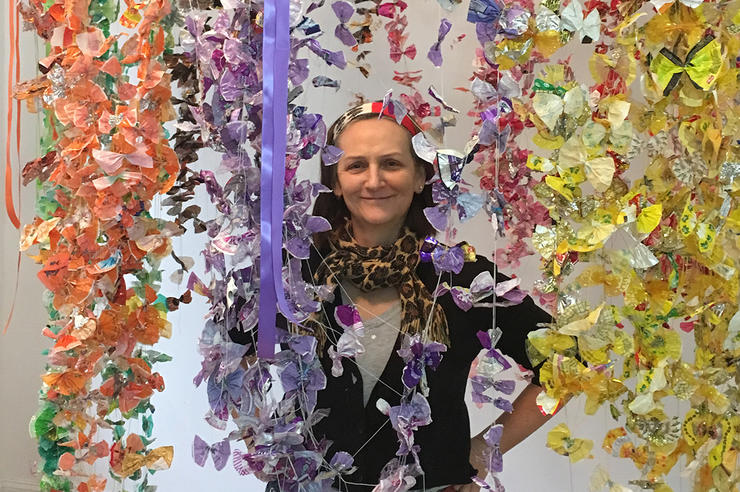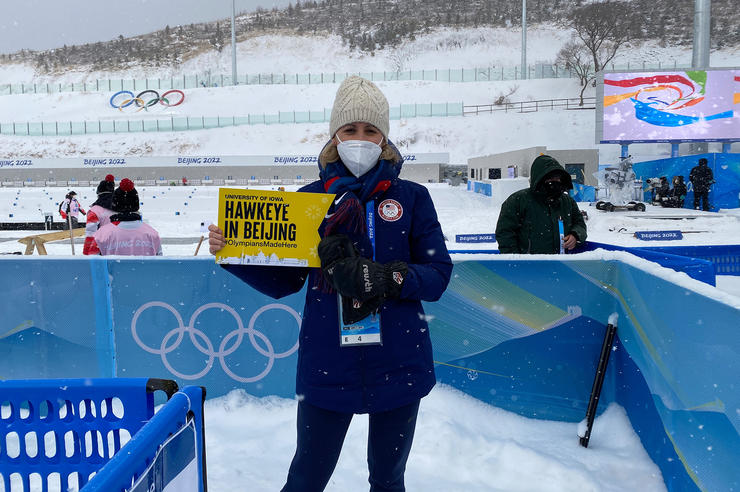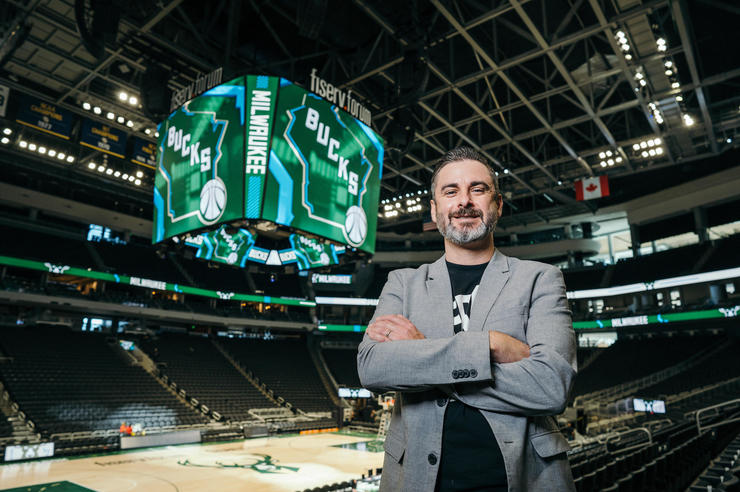Using art to help heal a community
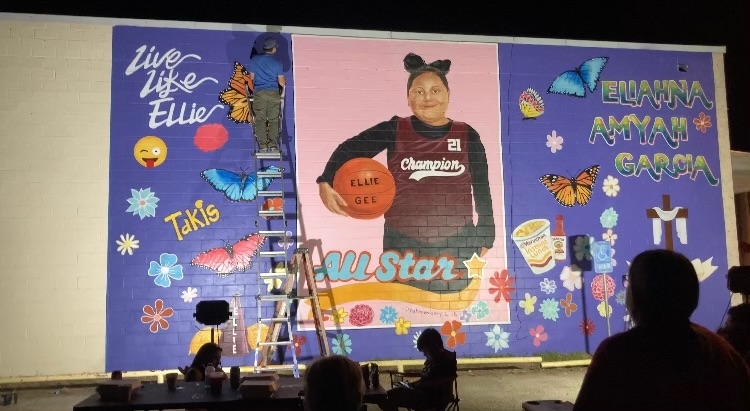
Abel Ortiz-Acosta paints a mural dedicated to Eliahna “Ellie” Garcia, who was killed in a shooting at Robb Elementary School in Uvalde, Texas. The University of Iowa alumnus spearheaded a project to paint 21 murals across the city of the children and teachers lost in the mass shooting. Photo by Evelin Ortiz
As news spread of a mass shooting at Robb Elementary School in Uvalde, Texas, Abel Ortiz-Acosta was getting texts from his children hiding under their desks at the town’s junior high and high school, which were on lockdown.
As the true scope of the May 2022 tragedy became clear, Ortiz-Acosta knew he had to do something.
“I thought, ‘What can I do? What’s in my power?’” Ortiz-Acosta says. “And the answer was art.”
He first thought was to paint a mural on the building of his art gallery.
“But that just wasn’t good enough,” Ortiz-Acosta says. “There had to be 21 murals. Each child and teacher needed to have their own space, and in a monumental way.”
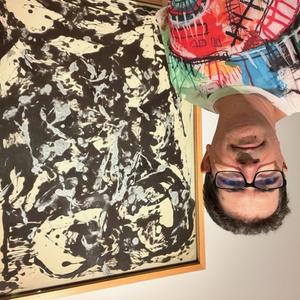
Abel Ortiz-Acosta says there’s a lot about Iowa City that he remembers fondly, including John’s Grocery and Dave’s Fox Head Tavern, but it’s the people he remembers most.
While working toward an MA and MFA in painting and drawing in the University of Iowa School of Art and Art History, Ortiz-Acosta was Byron Burford’s studio assistant.
“He was so interesting to work for, and he told me a lot of stories about how he was a student of Grant Wood, ran a circus, and was a jazz drummer,” Ortiz-Acosta says. “It was just an incredible experience.”
Along with Burford, Ortiz-Acosta also notes faculty members Joseph Patrick, David Dunlap, John Dilg, and Isabel Barbuzza as being particularly important to his Iowa experience.
“My first year was amazing because I immediately felt like I belonged,” Ortiz-Acosta says. “And that’s thanks to the welcome I got from not just the professors, but all the people I met in Iowa City.”
Ortiz-Acosta says he hopes if Iowans are ever in Texas that they take time to visit the murals in Uvalde.
The associate professor of art at South Texas Junior College and owner of ART LAB Contemporary Art Space has lived in Uvalde since shortly after graduating from the University of Iowa School of Art and Art History in 2001 and 2002 with an MA and MFA, respectively, in painting and drawing.
Ortiz-Acosta hoped the mural project would help his community in the healing process—knowing firsthand the healing power that art can have.
When Ortiz-Acosta was 7, his family moved from Mexico to Texas. He started first grade a week later, not knowing English. He spent most of the school year sitting in the corner, drawing.
“It was a very traumatic experience,” Ortiz-Acosta says. “I’ve been drawing since my earliest memories, and that year, art was crucial in calming me down.”
Ortiz-Acosta attended summer school to learn more English and repeated first grade with much more success. Years later, he earned a bachelor’s degree in art from the University of Texas at San Antonio.
He started applying to graduate schools, focusing only on the nation’s top-ranked art schools. It was only after he applied to Iowa that he learned that the department chair of the UTSA program, James Broderick, was an Iowa alumnus.
“I wanted to go to Iowa partly because it was out of my comfort zone, and I thought I’d learn more if I was out of my comfort zone, which was Texas, basically,” Ortiz-Acosta says. “The greatest three years of my college career were in Iowa City. It was an awesome program, had awesome professors, was an awesome town.”
Shortly after Ortiz-Acosta began planning the Healing Uvalde mural project, he was contacted by George Meza, who runs the Facebook group Collectors of Chicano/Latinx Art and Allies, about how the group could help. They organized an art auction, which helped fund the project.
The project also got a big boost from Mónica Maldonado, founder of the Austin-based nonprofit Mas Cultura, who came on board as project manager. Maldonado, who is connected with artists across Texas, also oversaw the recruitment of the muralists, handles the administrative side of the project, and manages the GoFundMe campaign.
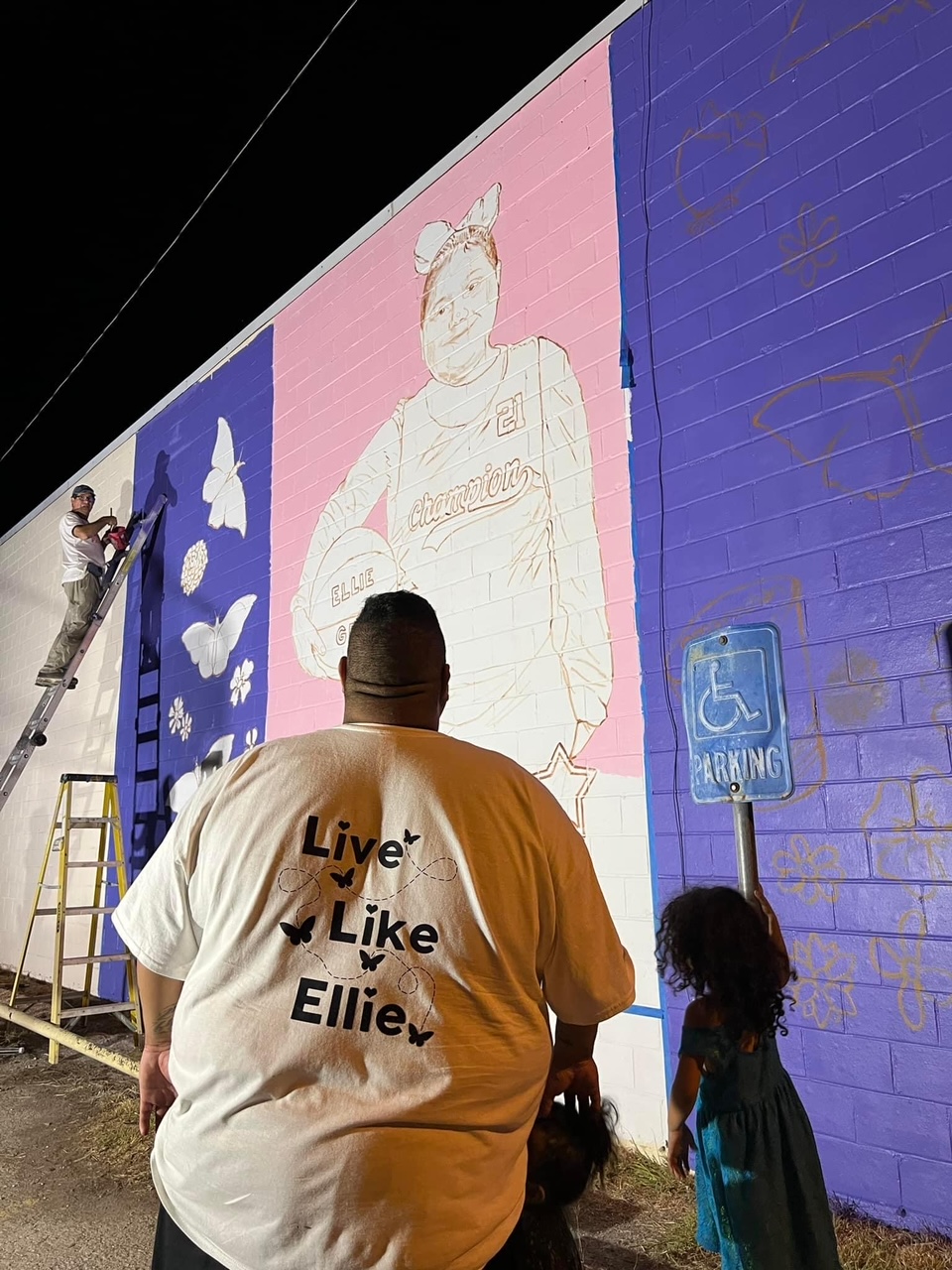
Finding artists and walls on which to paint the murals wasn’t the most important task, however. That was reaching out to the families to get consent to paint their loved one’s portraits. Every family agreed immediately.
Along with photographs, the families provided information about their loved ones, such as their favorite things and what they loved to do. This gave the artists a starting point to designing their murals. However, the murals evolved throughout the painting process as families thought of more things that should be included.
A GoFundMe campaign is underway to fund the ongoing and lifelong preservation of the Healing Uvalde murals, which includes maintenance and ongoing protective sealant.
In Ortiz-Acosta’s case, a cup of ramen noodles found its way into Eliahna “Ellie” Garcia’s mural after her family talked about how she loved them while the mural was being painted.
“It was great because it all sort of happened in an organic way,” Ortiz-Acosta says.
The families didn’t just help determine what was included in the murals; in many cases, they actually put paint on the wall. Ellie’s parents, siblings, grandparents, and aunts and uncles all pitched in to help paint the flowers on her mural.
“That was always part of the plan,” Ortiz-Acosta says. “We wanted them to participate and feel like they belonged. It’s an important part of the healing process. Ellie’s mom and dad have said that they now drive every morning through that parking lot to see the mural and say good morning to Ellie.”
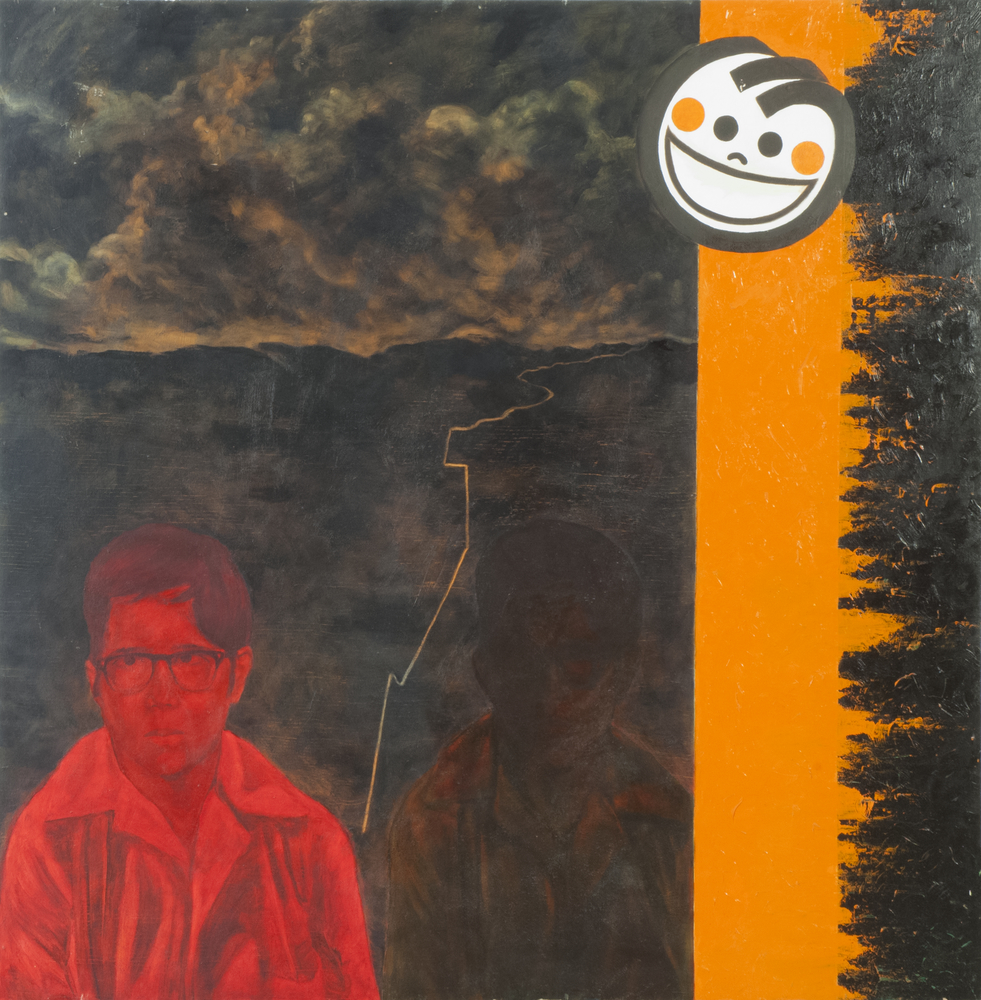
The Thesis Rental Gallery at the University of Iowa contains 6,000 pieces of art donated by graduate students of the School of Art and Art History between 1939 and 2014.
One of those works is Tijuana Sunrise by Abel Ortiz-Acosta, who graduated in 2001 and 2002 with an MA and MFA, respectively, in painting and drawing. Ortiz-Acosta says the 4-by-4-foot oil on panel was inspired by his immigration experience.
“The picture I used of myself was from my second year in first grade,” Ortiz-Acosta says. “And the line you see is the U.S.-Mexican border from the Tijuana perspective.”
All 21 portrait murals have been completed. Two more, one of which is also finished, give children and teens an opportunity to learn from and work with artists on their own creations. The murals on average are 25 to 30 feet wide and 18 to 20 feet tall and are within a five-block radius, allowing people to easily walk or drive around to see them. A dedication ceremony is being planned for the end of September or early October.
The next step is to set up a funding mechanism to maintain the murals.
“This pain is permanent, so we want these murals to be as permanent as possible,” Ortiz-Acosta says.
The mural project also plays a role in Ortiz-Acosta’s teaching—both inside the classroom and on site.
“This is one of the practical aspects of art that’s often overlooked,” Ortiz-Acosta says. “In my art appreciation class, the textbook lists functions of art in our culture and society, but it’s missing healing, so we talk about that. We also have created a learning space where we can bring students out here and have them analyze the murals, talk about the symbols, and discuss visual storytelling.”
Ortiz-Acosta says along with healing, art has the power to effect change, pointing to Lewis Hines’ photos in the early 20th century that helped lead to child labor laws.
“We need to protect children at any cost. And if our murals have this result in the future, so be it,” Ortiz-Acosta says. “But the most important thing is to tell their stories, to remember them forever, and, of course, continue the healing.”
